#astronomyfacts
Text
Officials confirmed on Monday that the metal item that crashed from the sky, tearing through the roof of a Naples, Florida, home last month and lodged in a family's wall, was part of the debris from a trash pallet NASA launched into space three years prior.
#NASA#SpaceJunk#CosmicDiscovery#FloridaMystery#SpaceExploration#Astronomy#SpaceDebris#UniverseMysteries#ScienceNews#SpaceStation#ExploringTheUnknown#NASAUpdate#AstronomyCommunity#CosmicCollision#AstroNews#SpaceWonders#DiscoveriesInSpace#SpaceDiscoveries#SpaceExplorers#GalacticWonder#AstronomyFacts#SpaceOddity#ExploreTheUniverse#SpaceAdventure#SpaceMystery#ClickLinkInBio#breaking news#global news#entertainment#whatshappeningintheworld
2 notes
·
View notes
Photo

Did you know that the word "astronaut" comes from Greek words meaning "star" and "sailor"? 🚀✨🌟 Take a journey through space and time with this interesting fact! #Astronomy #SpaceFacts #ScienceFacts #Astronauts #SpaceExploration #GreekWords #StarSailor #SpaceJourney #ExploreSpace #DiscoverSpace #FollowForMore #DidYouKnow #InterestingFacts #SpaceTrivia #AstronomyFacts #STEMeducation #STEMfacts #SpaceHistory #SpaceDiscovery #SpaceLearning #Astrophysics #SpaceResearch #SpaceMissions #SpaceTechnology #SpaceScience #UniverseFacts #SpaceGeek #AstronomyGeek #SpaceEnthusiast #SpaceCommunity https://www.instagram.com/p/CqAtN6RtacH/?igshid=NGJjMDIxMWI=
#astronomy#spacefacts#sciencefacts#astronauts#spaceexploration#greekwords#starsailor#spacejourney#explorespace#discoverspace#followformore#didyouknow#interestingfacts#spacetrivia#astronomyfacts#stemeducation#stemfacts#spacehistory#spacediscovery#spacelearning#astrophysics#spaceresearch#spacemissions#spacetechnology#spacescience#universefacts#spacegeek#astronomygeek#spaceenthusiast#spacecommunity
7 notes
·
View notes
Text
WHY DON’T WE AGE IN SPACE??
Blog# 195
Wednesday, May 25th, 2022
Welcome back,
Growing older can take a serious toll on the body. Bones become brittle, muscle shrinks, the immune system loses strength, and age-related ailments like arthritis can set in. More serious complications like declining cognitive function and heart disease can also take hold as the later years of life progress.
These symptoms can also come from something less common-space travel. Flying through outer space has dramatic effects on the body, and people in space experience aging at a faster rate than people on earth. Several papers recently published in the Cell family of journals look at the health hazards that spending time in outer space has had on astronauts. These studies showed that space alters gene function, function of the cell’s powerhouse (mitochondria), and the chemical balance in cell.

The health effects of spending time in space resemble some age-related disorders, like cancer and osteoporosis. While the similarities of spaceflight to aging give concern for long-term space missions, like a voyage to Mars, the outer space environment also provides an opportunity to study aging processes in the body.
Scientists estimate that the heart, blood vessels, bones, and muscle deteriorate about 10 times faster in space than in natural aging. In other words, scientists don’t need to wait for their biological study subjects to grow older naturally on Earth—with accelerated health effects in space, they can run experiments on astronauts on the International Space Station (ISS).
But the effects of space travel are not exactly the same as aging, and many of the changes that occur in space reverse themselves when people return to Earth. The comparisons can still be useful, though, and scientists say time spent in space provides a good model for understanding the chronic process of aging. Maybe outer space living could reveal new methods for protecting ourselves from processes that make us grow old.

Space affects different cell types in different ways, according to Michael Roberts, interim chief scientist of the ISS National Laboratory in a report in National Geographic. “It’s not a single acute exposure to toxic agents, for example; it’s something that’s long-term, chronic, and persistent.” Space life changes the body’s equilibrium for optimal functioning, thereby rebooting the way that cells respond.
In the microgravity atmosphere of outer space, the heart, bones, and muscle don’t need to work as hard as they do on Earth, so they weaken from disuse. Fluid-filled tissues may change shape because liquid flows differently in microgravity, which can change the shapes of organs like the brain. Not only that but higher background radiation outside of Earth’s atmosphere can cause DNA damage and increase cancer risk.
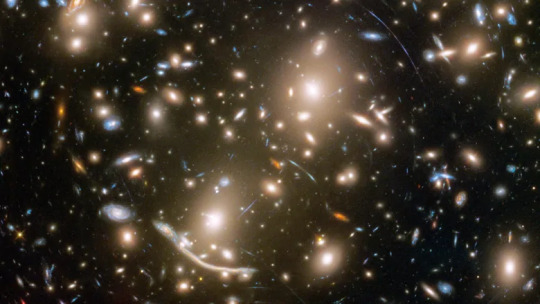
The new research on the health effects of outer space living started with a study on astronaut twin brothers, Scott and Mark Kelly. Ten research teams monitored changes in Scott’s body during his year-long trip to space. The scientists then compared the changes to Scott’s identical twin brother Mark who stayed on Earth during that time. The research teams recorded differences in the twin astronauts ranging from changes in gene expression profiles, microorganisms in the gut (the microbiome), cognitive abilities, and cardiovascular systems.
A striking discovery from the NASA Twins Study was that Scott’s telomeres changed length. Telomeres are regions of DNA at the ends of chromosomes that protect the rest of the DNA from damage, decay, and fraying. Telomere lengths diminish with age and how quickly they shorten is an important indicator of health and aging.

While Scott was in Space, his telomeres lengthened, but when he returned to Earth, they rapidly shrunk. Although his telomeres were longer during spaceflight, he ended up with shorter telomeres than he started with. Shortened telomeres have been linked to cardiovascular disease while longer telomeres are associated with cancer. So, either of these changes in telomere length can have negative health consequences.
Some of the health effects of spaceflight seem to equilibrate after a certain amount of time in space like decreased blood volume and changes in the lungs and heart. Astronauts haven’t spent enough time on the ISS to say with any certainty whether these changes in the body will reach a steady-state.
Originally published on www.nmn.com
COMING UP!!
(Saturday, May 28th, 2022)
“DO ATOMS DECAY OVER TIME??”
#astronomylover#astronomyclub#astronomyfacts#Astronomy#outer space#spaceX#spacecraft#universe#alternate universe#Parallel Universe#white universe#strange matter#Dark Matter#antimatter#Black Hole#stars#NASA#james webb space telescope
51 notes
·
View notes
Text

Via SciMyth
#gammaray#sun#endoftheworld#earth#supernova#asteroid#flare#physicsfacts#knowledge#sciencefacts#factz💯#astronomyfacts#physicsmemes#nuclear#solarsystem#physics#chemistry#weight#stephenhawking#cosmos#cosmology#universe#astronomy#space#spacescience#spaceexploration#science#quantumphysics#astrobiology#planet
25 notes
·
View notes
Photo
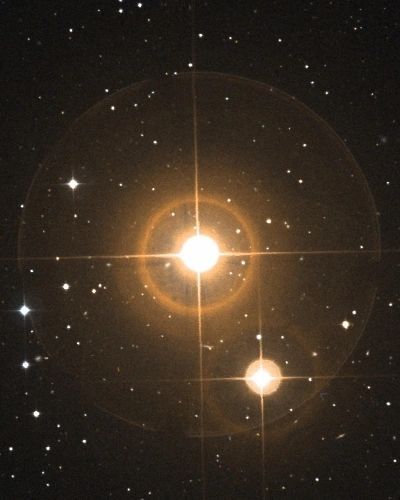
42 Herculis is a aging red giant located approximately 450 light-years away from Earth in the constellation Hercules. It has a similar mass and radius to the Sun and is estimated to be around 6.7 billion years old. 42 Herculis has been found to have at least two planets orbiting it, one of which is a hot Jupiter. #space #nasa #europeanspaceagency #42herculis #constellation #astronomy #astronomyfacts #astrophotography #astrophoto #esasky https://www.instagram.com/p/CorGa_xJWk3/?igshid=NGJjMDIxMWI=
#space#nasa#europeanspaceagency#42herculis#constellation#astronomy#astronomyfacts#astrophotography#astrophoto#esasky
2 notes
·
View notes
Photo
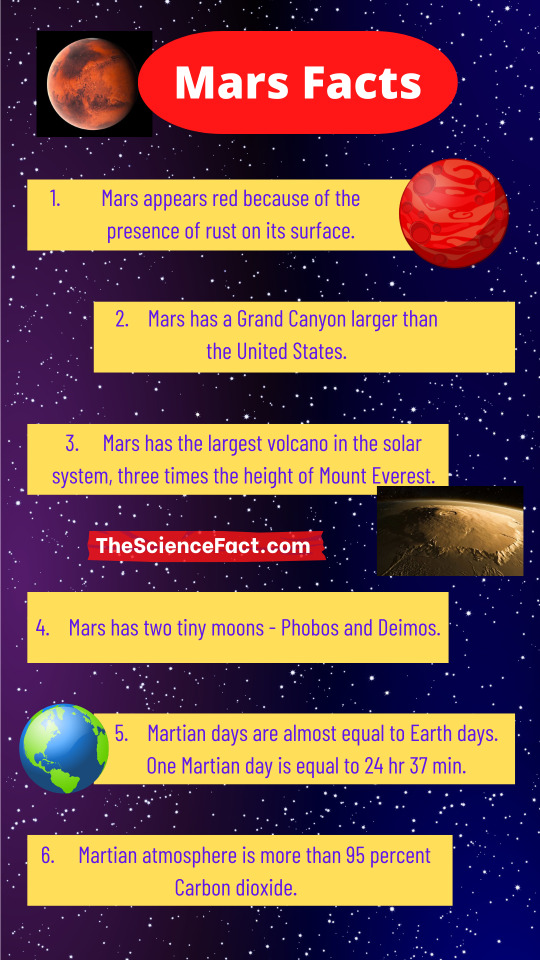
Mars is often called the ‘Red Planet’ because of its reddish appearance. After Earth, It is the most explored planet by humans. Here are some amazing and interesting facts about Mars.
#mars#planet#solar system#pluto#sciencefacts#astronomyfacts#space facts#spacelovers#olympus mons#astronomyposts#astronomylover
6 notes
·
View notes
Text

Ever wondered how a solar eclipse happens? 🤔
When the sun, earth, and moon align in a straight line, with the moon positioned between the sun and the earth, magic occurs in the sky! 🌍🌝☀️ The moon graciously steps in front of the sun, casting its shadow onto the earth. This celestial ballet results in the mesmerizing phenomenon we call a solar eclipse! 🌌
But here's the kicker – did you know that the type of eclipse formed depends on how far the moon is from our Earth? 🌏🌙 That's right! Whether it's a total eclipse, partial eclipse, or annular eclipse, it all boils down to the moon's distance from our planet.
Stay tuned as we delve deeper into the mysteries of the cosmos! 💫
#solareclipse#solareclipse2024#celestialwonders#astronomyfacts#rarescene#viraltopic#solarsystem#april2024#april#april8#april8th#solarglass#solarsunglasses#sunglasses#specialglass#faveplus
0 notes
Text
The Largest Galaxy in the Universe Will Shock You
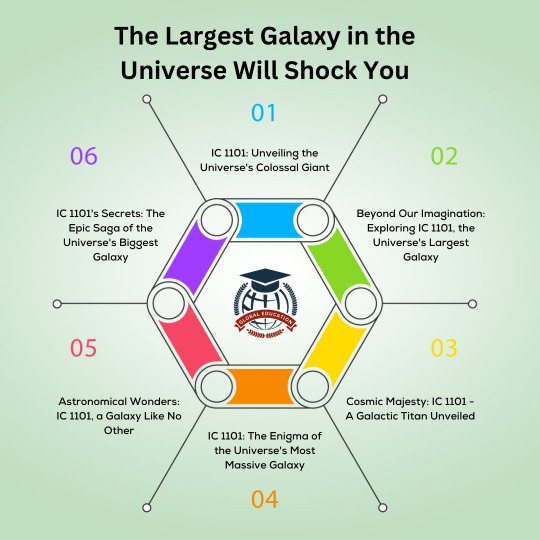
When we gaze up at the night sky, we often contemplate the countless stars and galaxies that adorn the cosmic canvas. Each one has its own unique story and characteristics, but today, we are about to embark on a journey to explore a galaxy that truly stands out from the rest. Brace yourselves as we delve into the astonishing world of "The Largest Galaxy in the Universe."
Galaxy Basics
Before we dive into the specifics of the largest galaxy, let's get acquainted with some fundamental concepts. A galaxy is a vast collection of stars, dust, gas, and dark matter held together by gravity. They come in various shapes and sizes, with our Milky Way being just one of billions in the universe.
Galaxy Classifications
Galaxies are categorized into several types based on their shapes. The most common classifications are spiral galaxies, elliptical galaxies, and irregular galaxies. Each type has its own unique characteristics.
Meet IC 1101
Now, let's turn our attention to the star of the show: IC 1101. This gargantuan galaxy is often touted as the largest galaxy in the observable universe. Located approximately 1 billion light-years away in the Virgo Cluster, IC 1101 is a giant elliptical galaxy that dwarfs all others.
Mind-Boggling Dimensions
To truly appreciate the scale of IC 1101, we need to wrap our heads around its mind-boggling dimensions. This cosmic titan spans an incredible 5.5 million light-years from end to end. To put it in perspective, our Milky Way galaxy is just around 100,000 light-years in diameter. IC 1101 is like the cosmic skyscraper of galaxies.
Chapter 5: Stellar Population
IC 1101 boasts a staggering number of stars. Estimates put its stellar population at around 100 trillion stars. To give you a sense of scale, the Milky Way contains about 100-400 billion stars. IC 1101's starry abundance is truly astonishing.
Supermassive Black Hole
At the heart of IC 1101 lies an enormous supermassive black hole. This colossal cosmic abyss has a mass estimated to be around 40 billion times that of our Sun. It's one of the most massive black holes ever discovered, adding to the mystique of this already awe-inspiring galaxy.
Formation and Evolution
The formation and evolution of IC 1101 have puzzled astronomers for years. It's believed that it grew to its colossal size through numerous mergers with other galaxies over billions of years. These galactic collisions and acquisitions contributed to its vast expanse and dense stellar population.
The Virgo Cluster
IC 1101 is not alone in the cosmos; it resides within the Virgo Cluster, a collection of thousands of galaxies. This cluster is like a bustling cosmic city, and IC 1101 is its shining star.
Beyond IC 1101
While IC 1101 may be the largest galaxy we've discovered so far, the universe is a vast and mysterious place. There could be even more massive galaxies out there waiting to be uncovered by future generations of astronomers.
The Mysteries of the Universe
The exploration of galaxies like IC 1101 reminds us of the incredible mysteries that the universe holds. It encourages us to continue our quest for knowledge, to keep looking up, and to marvel at the wonders of the cosmos.
Conclusion
As we conclude our journey into the realm of "The Largest Galaxy in the Universe," we are left with a sense of wonder and awe. IC 1101, with its mind-boggling size and secrets, serves as a reminder that the universe is full of surprises and that there is much more to discover beyond our home planet. So, the next time you look up at the night sky, remember that there are galaxies out there that can truly shock you with their grandeur.
#GalacticWonders#IC1101#LargestGalaxy#CosmicScale#StellarSpectacle#AstronomyDiscoveries#GalacticMarvels#VirgoCluster#CosmicMysteries#BlackHoleEnigma#GalaxyExploration#UniverseWonders#CosmicJourney#AstronomyFacts#StarryUniverse#SpaceOdyssey#AweInspiringCosmos#MindBlown#CelestialWonders#BeyondTheMilkyWay#GalaxyFacts#Astronomy101#GalacticMergers#AstronomyEducation
0 notes
Text
Neptune's Mysterious Secret: Only one orbit since discovered! #fact #isro #spacemission

Explore the captivating story of Neptune, the distant ice giant, as it completes just one orbit since its discovery. Unravel the secrets of this enigmatic world and the mysteries of our solar system.
#Neptune#SpaceMysteries#CosmicJourney#IceGiant#SolarSystem#Astronomy#CelestialWonders#PlanetNeptune#OuterSpace#CosmicSecrets#EnigmaticOrbit#AstronomyFacts#Universe#Stargazing#AstroDiscoveries#solar system#cosmic secrets#astronomy#ice giant#one orbit#mysteries#enigmatic#discovery#outer space#celestial wonders#exploration.
0 notes
Video
youtube
Surprising Theory About Mysterious Object in our Solar System Uncovered.
#youtube#SpaceExploration#Astronomy#cosmic wonders#alternate universe#astronomyphotography#celestialbeauty#stargazing#astronomylovers#spacediscoveries#cosmicjourney#astrophotography#nasa breaking news#astronomyfacts#cosmicbeauty#spacemagic#nebulae#explorespace#cosmicwonderland#elon musk#stars and galaxies#astrology#astronomical#spaceenthusiast#AstroEducational#cosmicphenomena#astronomynews#spacevoyage
1 note
·
View note
Text
Is this design printed on a T-shirt and on more than 89 products? Find these amazing products here

#space#spacefacts#spaceart#spacestation#spacetravel#planet#planetearth#planetbirds#planetfitness#planets#astronomy#astronomylover#astronomyfacts#astronomyphotography#astronomynerd#outer_space#outer_spacevodka#outer_space_cream#outer_space_football_club#earthquake#earth#earthfocus#earthmix#earthofficial#universe#universetoday#universehasyourback#universequotes#universelifestyle
1 note
·
View note
Text
CAN A BLACK HOLE SUPPORT LIFE??
Blog# 201
Wednesday, June 15th, 2022
Welcome back,
We're used to thinking of possible homes for life on watery worlds orbiting stars like the sun, but a new research paper has found a new potential habitat: a rocky planet orbiting just past the event horizon of a rapidly spinning supermassive black hole.
The exotic forces around that black hole are able to warm up the planet just right, but the scenario comes with a catch: the planet must orbit at nearly the speed of light.

We don't know all the possible places that life could arise in our universe, because so far we only have one example: us. And while scientists (and sci-fi authors) enjoy thinking about all sorts of exotic arrangements and possibilities for lifeforms, for serious searches of extraterrestrial intelligence, our best bet is to use our own circumstances as a template, hunting for life that isn't too dissimilar to what we find on Earth.
From that, we can draw two extremely broad requirements. One, life like our own requires liquid water. Water is the most common molecule in the universe, composed of hydrogen (element No. 1 when it comes to abundance in the cosmos) and oxygen (the byproduct of fusion reactions inside stars like our sun, making it also very common).

But that water is usually either vaporized into a plasma (and hence very bad for life) or locked down in its solid, frozen state as ice (also not very good for life).
The liquid stuff is harder to come by, and requires a source of heat that isn't so hot that water just evaporates. We've found this perfect balance in only two kinds of locations: the so-called "habitable zone" of stars, a band of orbits where the light output it just right; and buried underneath the icy crusts of certain moons of the outer planets in our solar system, where tidal heating generates the necessary energy.

But just raw heat isn't enough. Life is a complex process that uses energy to do interesting things (like move around, eat and reproduce). All those processes are not perfectly efficient, so they generate waste heat. This waste heat must be dumped safely away from the environment; otherwise, you end up with nightmare greenhouse scenarios, with temperatures escalating to uncontrolled levels and killing off any life that got started.
On the Earth, we dump our waste heat into the vacuum of space itself in the form of infrared radiation. This contrast, between a source of energy and a place to put all the waste, enables life to flourish on our home planet, and presumably any other planet with a similar setup.
Originally published on https://www.space.com
COMING UP!!
(Saturday, June 18th, 2022)
“WHY IS SPACE A VACUUM??”
#Astronomy#astrophysics#astrophotography#astronomyfacts#astronomylover#astronomyclub#outer space#space#spaceX#spacecraft#universe#alternate universe#Parallel Universe#white universe#Dark Matter#antimatter#strange matter#The Sun#Sunspot#NASA
43 notes
·
View notes
Text

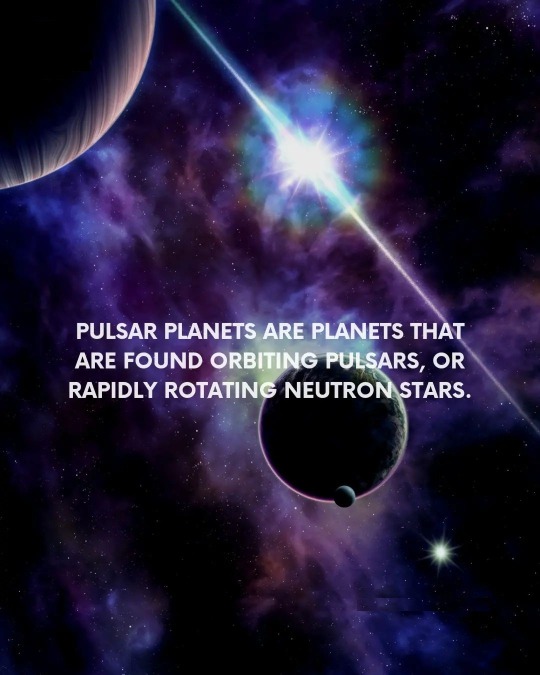


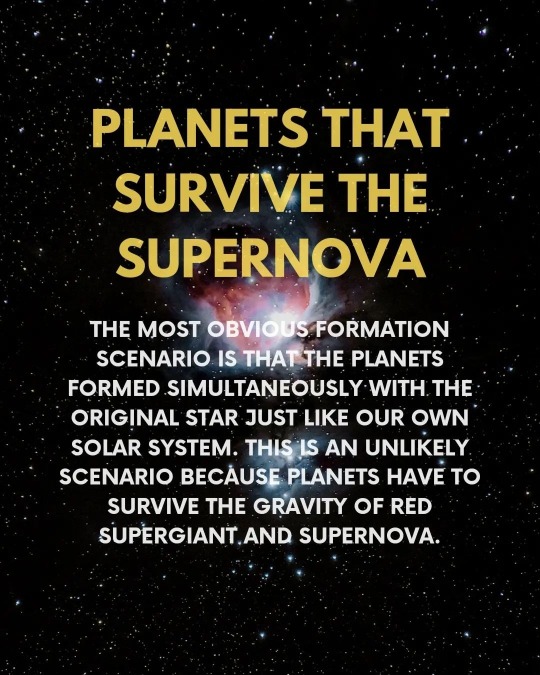
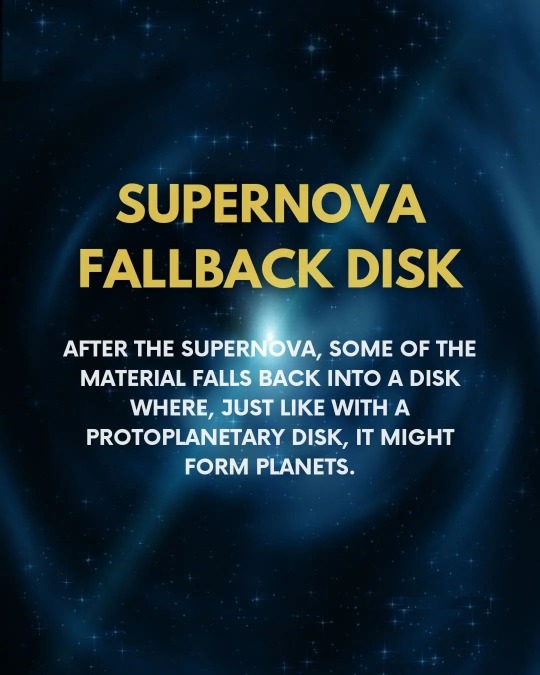


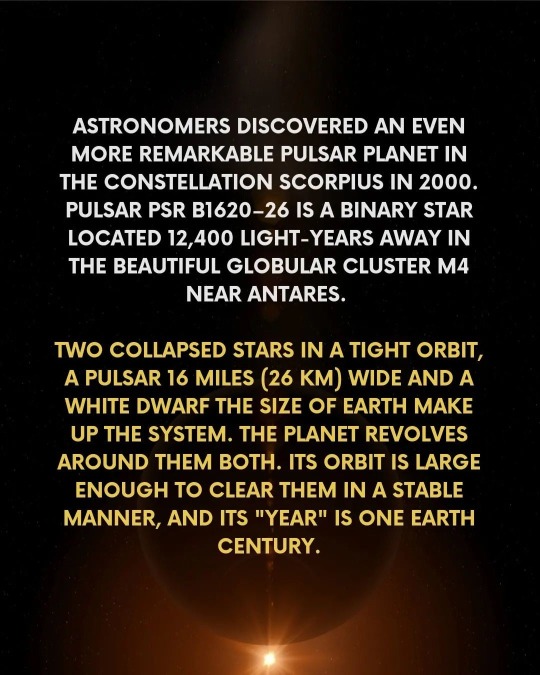
Pulsar planets were the first type of planet discovered outside of our solar system, and their discovery stunned the scientific community. These weren't the planets we were expecting to find: solar system-like planets orbiting a Sun-like star. Instead, these planets orbited a pulsar, a neutron star that rotates rapidly (the extremely dense core of a massive star that exploded as a supernova). However, only five such pulsar planets have been discovered since their discovery in 1992, making them extremely rare. Planets have been discovered in less than 1% of pulsars.
Via Duvvuru lokesh
#astronomy#cosmology#astrophysics#space#pulsar#exoplanet#exoplanets#neutronstar#cosmos#universe#astronomer#astrophysicist#physics#physicsoftheuniverse#spacephysics#spacefacts#astronomyfacts#astronomia#cosmologia#solarsystem#spacescience#spaceexploration#science#quantumphysics#astrobiology#planet#planets#galaxy#galaxies#NASA
16 notes
·
View notes
Photo

Scientists estimate that there may be tens of billions of solar systems in just our galaxy alone, perhaps even as many as 100 billion. Now do the math....there is an infinite amount of possibilities for life in the universe. It's kinda narcissistic to believe that humans are the only ones worthy of creation isn't it? #sciencefacts #astronomy #astrology #astrophysics #star #stars #stargazing #startrek #origin #tesla #elonmusk #maths #physics #milkyway #keepanopenmind #astronomyfacts #didyouknow #funfacts #cybertheticproject #nftcollection #nftdrop #nftcommunity https://www.instagram.com/p/CioBHTRAsd8/?igshid=NGJjMDIxMWI=
#sciencefacts#astronomy#astrology#astrophysics#star#stars#stargazing#startrek#origin#tesla#elonmusk#maths#physics#milkyway#keepanopenmind#astronomyfacts#didyouknow#funfacts#cybertheticproject#nftcollection#nftdrop#nftcommunity
0 notes
Photo

Posted @withregram • @astro.voyagers Astronomical events in August 2022 Follow us: @astro.voyagers Credit: @astrogeekz ______________________ #astrophysics #sciencefacts #physics #spacefacts #quantumphysics #astronomyfacts #astronomicalevent #physicsfacts #cosmology #pubity #astrophile #quantummechanics #instascience #generalrelativity #astronomer #astrophoto #dimensionphysics #astronomylover #gravitationalwaves #astronomers #nikolatesla https://www.instagram.com/p/CgunCyfv69x/?igshid=NGJjMDIxMWI=
#astrophysics#sciencefacts#physics#spacefacts#quantumphysics#astronomyfacts#astronomicalevent#physicsfacts#cosmology#pubity#astrophile#quantummechanics#instascience#generalrelativity#astronomer#astrophoto#dimensionphysics#astronomylover#gravitationalwaves#astronomers#nikolatesla
1 note
·
View note
Photo

This neutron star inhabits what is called a binary system, in an orbit with another star. The neutron star is a kind dubbed a "black widow," named in honor of female black widow spiders that eat their male partners after mating. It apparently was born with the usual mass of a neutron star, about 1.4 times that of our sun, but its gravitational pull poached material from its companion star, enabling it to grow to a mass seemingly at the uppermost limit before physics would dictate a collapse into a black hole, the densest of all known objects. Its companion star has been stripped almost bare, losing perhaps 98% of its mass to the black widow, leaving it at about 20 times the mass of our solar system's largest planet Jupiter — a far cry for its original size. "It has swallowed nearly a full sun's worth of mass without yet becoming a black hole. So it should be just on the edge of black hole collapse," Mr. Romani said. Credits for the info: theHindu Follow 👨🚀 @spaience for the best space and astronomy facts. We are a small community of about 13000 active people on Instagram. You can become a part of the family too and share your viewpoints and question with me, use. Let's discover the universe and uncover the deep cosmos. Supernova 🚀🚀🚀, Moon, Mars, Solar System facts and soo mush more. See you on the other side. #spaience #binarystarsystem #binarystars #binarystar #neutronstars #newspacediscoveries #spacediscovery #spacediscoveries #nasadiscovery #astronomylover #astronomyfacts #astronomynerd #astronomypicturesdaily #astronomyclub #nasa #spacefacts #space (at Germany) https://www.instagram.com/p/CgrLR8ADipH/?igshid=NGJjMDIxMWI=
#spaience#binarystarsystem#binarystars#binarystar#neutronstars#newspacediscoveries#spacediscovery#spacediscoveries#nasadiscovery#astronomylover#astronomyfacts#astronomynerd#astronomypicturesdaily#astronomyclub#nasa#spacefacts#space
0 notes